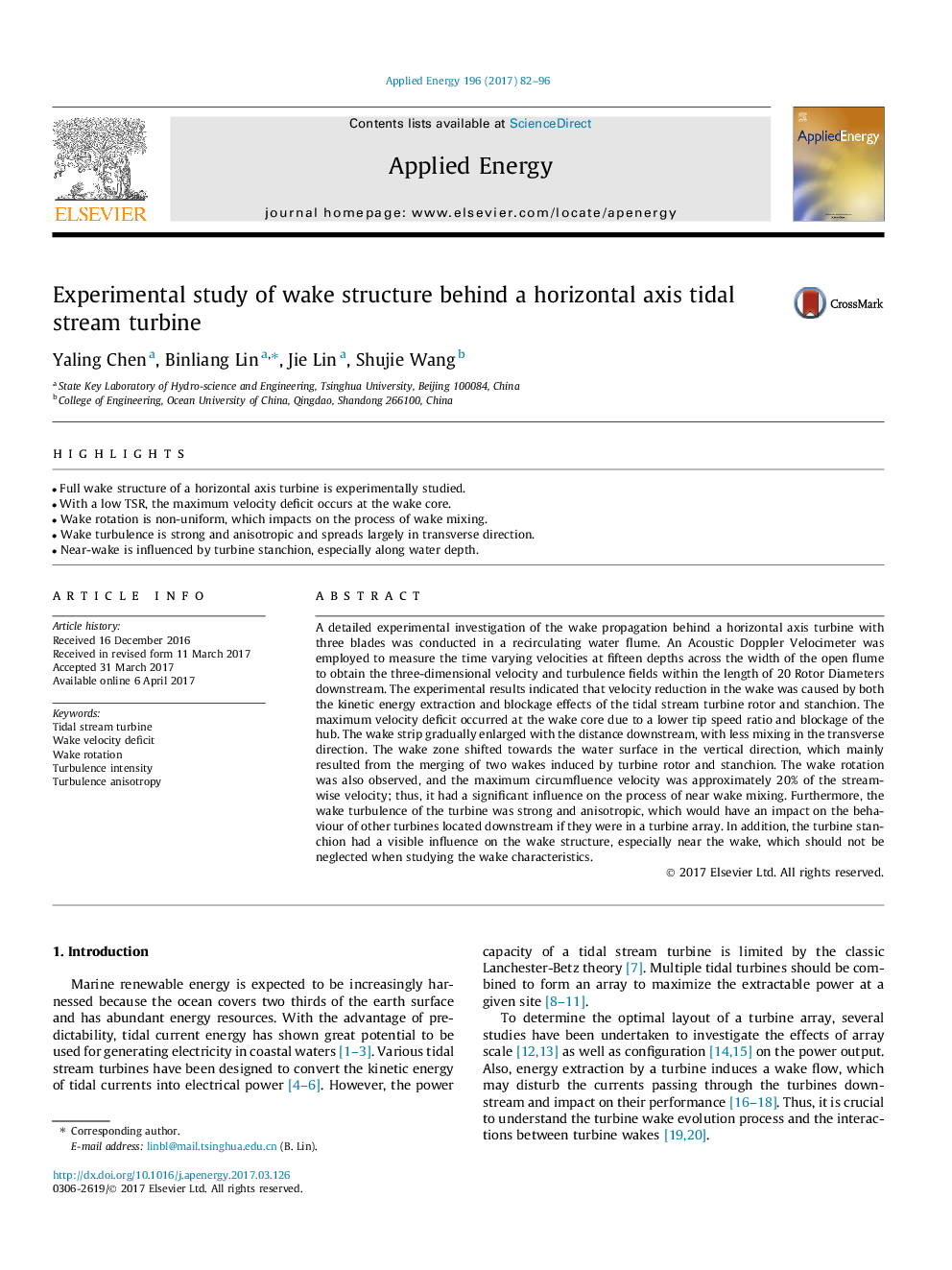| کد مقاله | کد نشریه | سال انتشار | مقاله انگلیسی | نسخه تمام متن |
|---|---|---|---|---|
| 4916217 | 1428094 | 2017 | 15 صفحه PDF | دانلود رایگان |
- Full wake structure of a horizontal axis turbine is experimentally studied.
- With a low TSR, the maximum velocity deficit occurs at the wake core.
- Wake rotation is non-uniform, which impacts on the process of wake mixing.
- Wake turbulence is strong and anisotropic and spreads largely in transverse direction.
- Near-wake is influenced by turbine stanchion, especially along water depth.
A detailed experimental investigation of the wake propagation behind a horizontal axis turbine with three blades was conducted in a recirculating water flume. An Acoustic Doppler Velocimeter was employed to measure the time varying velocities at fifteen depths across the width of the open flume to obtain the three-dimensional velocity and turbulence fields within the length of 20 Rotor Diameters downstream. The experimental results indicated that velocity reduction in the wake was caused by both the kinetic energy extraction and blockage effects of the tidal stream turbine rotor and stanchion. The maximum velocity deficit occurred at the wake core due to a lower tip speed ratio and blockage of the hub. The wake strip gradually enlarged with the distance downstream, with less mixing in the transverse direction. The wake zone shifted towards the water surface in the vertical direction, which mainly resulted from the merging of two wakes induced by turbine rotor and stanchion. The wake rotation was also observed, and the maximum circumfluence velocity was approximately 20% of the stream-wise velocity; thus, it had a significant influence on the process of near wake mixing. Furthermore, the wake turbulence of the turbine was strong and anisotropic, which would have an impact on the behaviour of other turbines located downstream if they were in a turbine array. In addition, the turbine stanchion had a visible influence on the wake structure, especially near the wake, which should not be neglected when studying the wake characteristics.
Journal: Applied Energy - Volume 196, 15 June 2017, Pages 82-96
